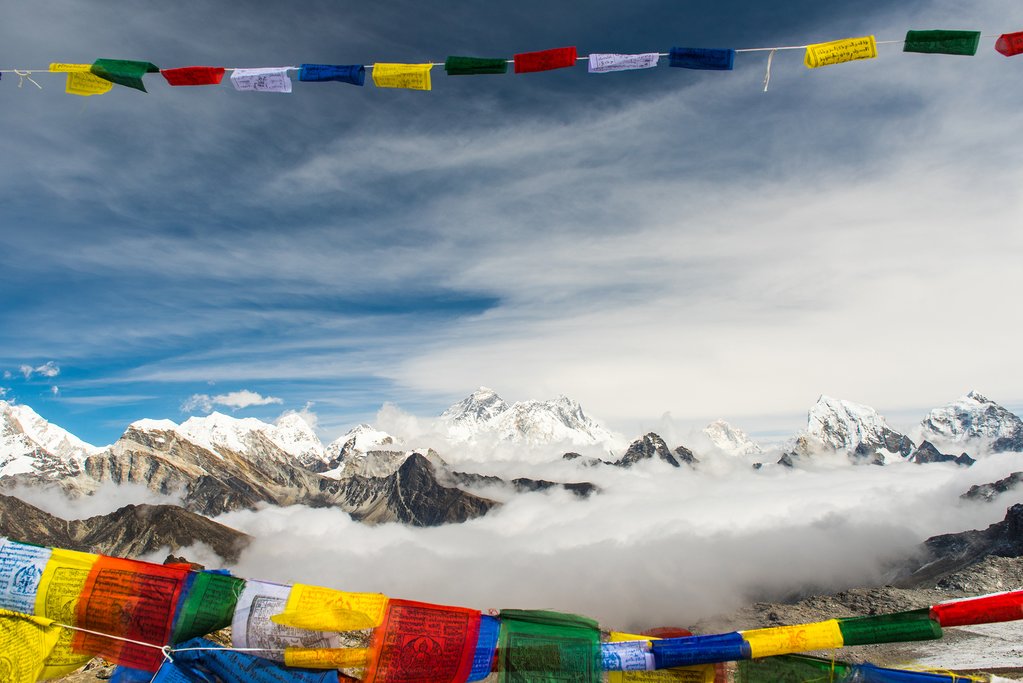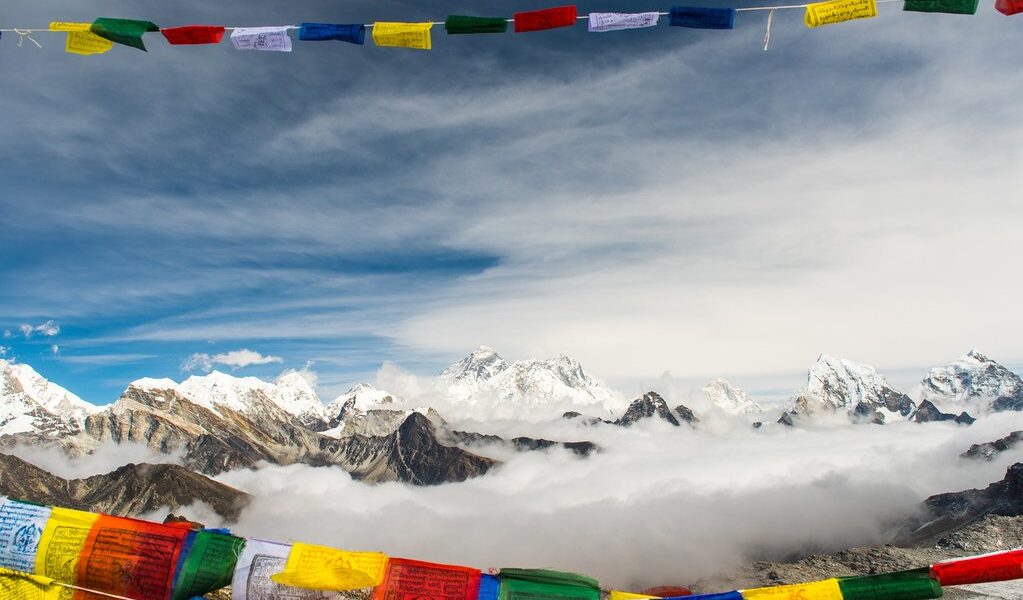
With the arrival of monsoon rains by mid-June, the trails empty of most trekkers. The early part of the month usually marks the end of Everest-climbing season, so climbers and other expedition members retrace their steps along the Everest Base Camp trekking route and back to Lukla. Here’s what to expect in the Everest region in June.
Weather
The arrival of the monsoon season in Nepal typically occurs in early June, with a near certainty by the middle of the month. While the overall rainfall recorded for June is generally less than that experienced in July or August, this is primarily due to the monsoon not fully establishing itself during the initial one or two weeks of June. In the vibrant city of Kathmandu, expect the gradual build-up of rain clouds and a rise in humidity, creating conditions that might feel somewhat uncomfortable. Although the temperatures in the mountainous regions become notably cooler, the weather conditions are often not ideal for optimal mountain viewing due to cloud cover and persistent moisture in the air.
However, it is important to remember that even after the monsoon rains have commenced, it doesn’t usually mean it rains continuously all day, every day. So, provided you are well-prepared for the anticipated wet conditions, and you understand that the increased humidity and frequent rain clouds might partially obscure some of the stunning views, visiting and trekking in the Everest Region during the month of June is certainly not an impossible venture. Furthermore, it is worth noting that the higher the altitude you ascend to within the Everest Region, the lesser the likelihood of experiencing significant rainfall.
Crowds & Costs
With the exception of expeditions returning from their attempts to summit Everest, the trails in the Everest region are generally much quieter and less crowded with trekkers during the month of June. Finding a suitable bed in a decent teahouse along your chosen trekking route is unlikely to be a problem, but it’s worth bearing in mind that some teahouses might temporarily close their doors for the duration of the monsoon season. It is strongly advisable to always trek with a knowledgeable and experienced guide. One of the key benefits of having a guide is their local knowledge regarding which teahouses are open and operating during this off-peak or low season.
Recommended Routes
If you are fortunate enough to commence your trek in the Everest region in late May or the very beginning of June, you might just get lucky and encounter minimal or even no rainfall during your adventure. However, be prepared for the increasing humidity levels, which are likely to impact and potentially obscure some of the otherwise magnificent views. If your trek is scheduled for later in June, then you should be prepared to encounter some rain. Treks in the Everest region typically rely on air access through Lukla airport rather than overland road transport. This reduces the chances of encountering problems with landslides. Despite that, most experienced trekkers would agree that trekking in the rain is not the most enjoyable way to spend your time.
Should you have your heart set on trekking all the way to the iconic Everest Base Camp (EBC), you should be aware that it will probably rain most frequently at lower elevations (although it is important to remember that nowhere in the Everest region can be considered truly ‘low’ in terms of altitude). The higher you ascend, the less rain you are likely to experience. So, if you are prepared to brave a few days of trekking in potentially wet conditions, you might still have the opportunity to experience EBC itself in relatively decent weather.
One excellent way to mitigate the risk of spending extended periods trekking in wet conditions in the Everest region is to establish your base in Namche Bazaar and undertake day hikes from there, venturing out for the occasional overnight hike if the weather conditions are particularly favorable. Namche Bazaar is approximately a two-day walk from Lukla. While you might not make it all the way to Everest Base Camp using this strategy, you will undoubtedly witness and experience many beautiful sights and sounds. There is also the added benefit of the potential to capture some breathtaking early-morning views or stunning post-rain vistas from locations not far from Namche Bazaar itself.
Chat with a local specialist who can help organize your trip.
What to Bring
It is absolutely essential to ensure that you have good quality waterproof clothing and equipment for trekking in June. It is equally important to pack a sufficient number of changes of clothes so you don’t run the risk of having to re-wear wet clothes from the previous day. Many experienced trekkers find that carrying a reliable umbrella can be a more convenient and comfortable option for dealing with lighter showers. However, if the rain looks like it is setting in for a prolonged period, then a comfortable and waterproof raincoat, and even rain pants, would be a very wise addition to your trekking gear.
Consider the importance of layers when preparing for the temperatures that can vary greatly. A hat and gloves are always a good idea!
Getting There & Away
The quickest and most convenient method of reaching the Everest region in any month, including June, is to take a flight from Kathmandu to Lukla. However, these flights are frequently subject to delays or even cancellations due to adverse weather conditions or operational issues at Kathmandu, Lukla, or somewhere along the flight route. The likelihood of delays and cancellations is even higher during June, due to the increased probability of wetter-than-normal conditions. If you are flying to or from Lukla, it is essential to allow yourself plenty of contingency time when planning your onward international connections. Be sure to bring a good book or a pack of cards to help pass the time should you experience delays.
Our Favorite June Itineraries
Everest Base Camp Trek – 16 Days
Namche Bazaar Trek – 7 Days
Best Short Treks in the Everest Region
More Helpful Information
Nepal in June: Travel Tips, Weather, and More
Best Time to Visit Nepal
Everest Base Camp in May
Everest Base Camp in July
Best Monsoon Treks in Nepal
B-1708

